When you think about fencing, wood fencing comes first in your mind. But why only a wood fence? When other options are on your plate for fencing, like metal.
It happens because the traditional style and classic beauty of wood fencing win your heart.
As you end with the decision of wood fencing, numerous questions and dubious points emerge in your mind, like:
- Which is the best-treated wood for a fence?
- What wood to use for a fence?
- Which is the strongest wood fence design?
No worries. You will get all answers to your questions through this article that provides you with well-defined guidelines, features, and knowledge about different wood.
It is important to ensure safety when installing a wood fence while maintaining a fascinating and fashionable appearance. So, take time to inspect the right wood for fencing for long-term uses, because the longevity of their manufacturing designs hinges on their properties.
Factors to consider when choosing wood for fencing
There are several factors to consider when choosing wood for fencing, including:
1. Enquire about Wood Species
There are countless wood species in the U.S. and all of them are not suitable for a wood fence. So, consider making sure the chosen wood species are not prone to insect attacks, shrinkage, or expansion.
The green flag to buy a particular wood species is based on its natural repellant features. Choose wood with natural pest-resistance features, for instance, cedar and redwood containing natural acids and oils, which keep away insects, & bugs.
If you do not have a budget for these expensive woods, you can go for affordable wood. Then you will have to maintain them periodically by staining and treating them, such as hemlock.
2. Is It Suitable For Your Budget?
You can not indeed buy out of your budget. Ensure enquiring about the wood prices. And it is obvious to spend an extra penny on durable wood.
Expensive wood means top-quality wood. If you want to save money for the long term, buy long-lasting and strong wood to have fine work. Otherwise, affordable wood can be a good choice if you upkeep it annually or monthly.
3. Weather Conditions of Your Area
The life span of wood, by and large, depends on weather conditions. How often does rain occur in your area? What is the range of temperature? Is it changeable or steady weather?
If you reside in an area having ample rain, then make sure to install wood with the natural features of repelling buckling, rotting, and moisture to avoid wood decay.
If the Sun is always on the head in your place, then make sure the color of the wood does not fade away. And, of course, you will have to shield it to protect it from UV rays.
4. Longevity
Enquire about the rigorousness and longevity of the wood you have to use for fencing. Some woods are long-lasting enough for decades, whereas others are usable only for a few years. Ascertain you are spending money at the right wood to avoid expenses in the future.
5. Time & Effort To Install & Maintain
Not all woods come with both traits of being easy to install and effortless to maintain.
For example, cedarwood fencing can be installed quickly and easily, but it demands consistent maintenance to have protection against UV rays.
Whereas the installation of the redwood fence is time-consuming, and need not be for its maintenance.
10 Best Wood For Fencing In 2022 (Most-In-Demand)
Here is a list of some of the best wood options for fencing, based on their durability, maintenance requirements, and overall suitability for use as a fencing material:
1. Cedar Wood
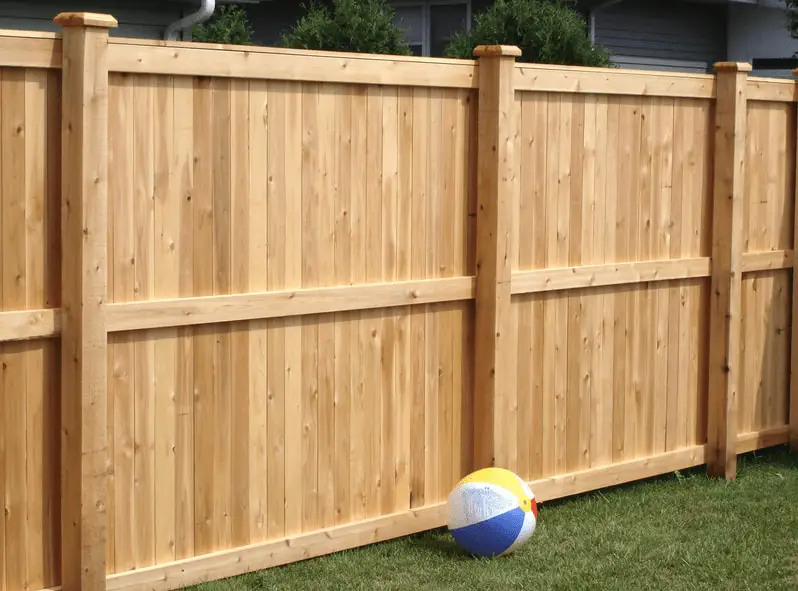
Why is Cedar a good choice for wood fencing?
Cedarwood has a compact grain and lesser knots with a richness of natural oils to protect it from rot and insects. Cedar pickets with covered pine posts are found in cedar, which makes the wood suitable to use in the ground because of the feature of repelling decay. The sealant property of the wood protects against threatening UV rays.
Besides its strength, aesthetic beauty and the natural delightful smell of cedar will always freshen your mood. This softwood has a medium price range, except the western red cedar which is comparatively high-priced.
Prefer painting over this wood to remain it for the long term. However, most people stain the cedar wood rather than paint it.
Staining works in two ways, the first one is providing protection, and the second one is maintaining exposure to its beauty.
You can either treat the wood or guard the fence posts through a concrete base to avoid its contact with soil.
Pros
Cons
2. Redwood
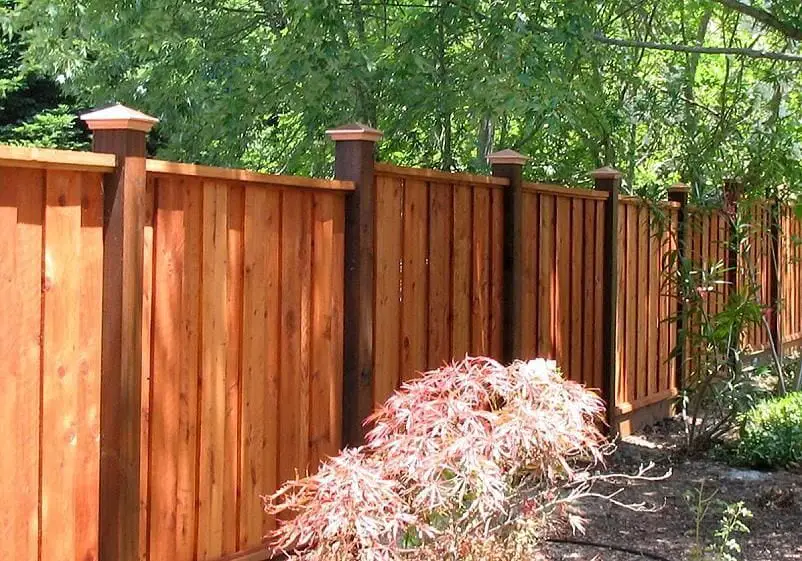
A power pack of qualities of redwood will impress you the most, like its durability and grace look. The exclusive appearance and the modish reddish-brown hue are the centers of attraction of redwood. Redwood is appropriate for fence panels owing to its longevity and resistance power to decay and insects.
Despite having a natural resistance to insects, you can prefer to stain it to avoid the effects of aging, like the changing colors.
You can easily stain the wood in the following ways:
- Prepare the wood surface with a fine cleaner or brightener.
- Sand the wood to get rid of the mill glaze.
- Then, apply a stain.
- After 15-20 minutes, check for unabsorbed stains and rinse off the unnecessary stain.
- Use sealant as the stain dries out.
The high cost of redwood is worth it because of its trait to last with you for the long term.
Avoid getting exposed to the wood to moisture and dry weather to keep it with you for a long time with brightening beauty.
Pros
Cons
3. Cypress Wood
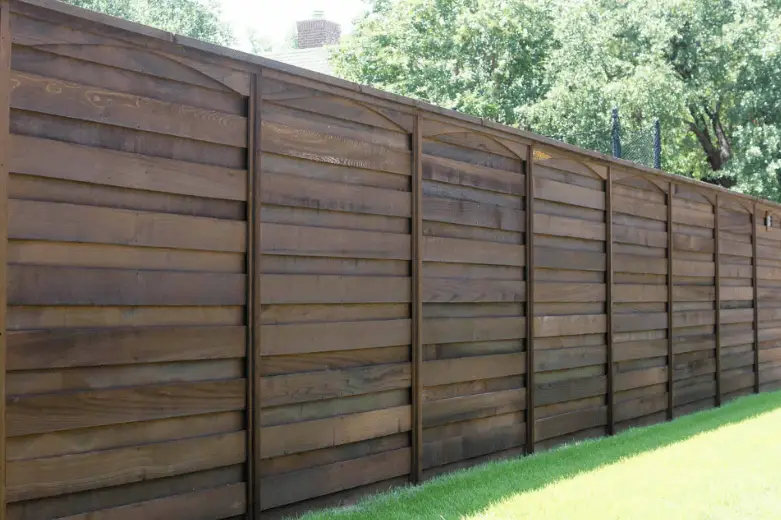
Cypress is recommended for outdoor fencing as it contains natural elements which provide resistance to insects. The best and strong wood to choose for wood fencing.
The reason for its high costs is not only its favorable features but also the addition of transportation costs; since its origin in the Southern United States.
Preservation of the wood is a must apart from getting its benefits.
What to do for its protection?
Firstly stain it and then add a clear sealer.
Pros
Cons
4. Black Locust
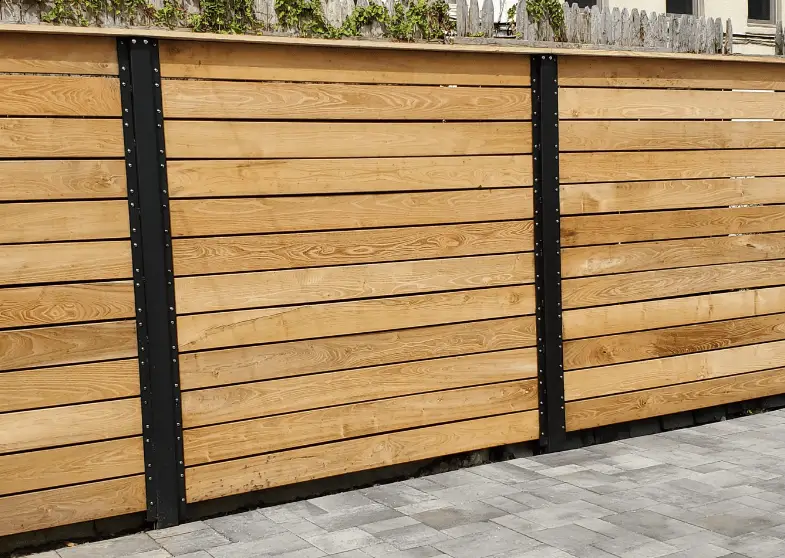
Black Locust is a variant of hardwood with high density, straight grain, and a mid texture that repels rot and is appropriate for fence posts.
Immensely tough, long-lasting, and versatile wood with a wide range of uses: flooring, paneling, furniture, and fence posts.
The surface of the wood has a slightly yellow color. The tendency of changing colors is to blacken to a russet brown over time.
This is the only wood that does not demand any chemicals to preserve its aesthetic beauty that lasts for over 50 years. Another uniqueness of the wood is it burns even in wet conditions.
As you cut planks, they will emit odor. Do not worry as it dissipates with seasoning.
Pros
Cons
5. Douglas Fir
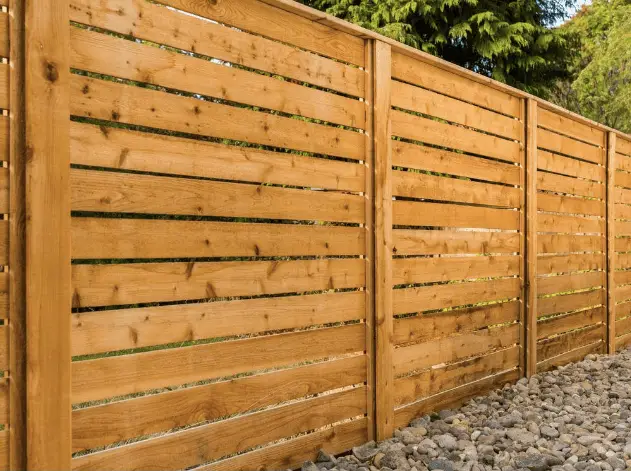
The fantastic appearance of Douglas fir with brown color and a light mixture of red or yellow with a natural light touch of luster is eye-catching. However, its color varies with aging.
The wood has straight grains, standard planks, and a medium texture. That makes the wood strong to withstand the burden of heavy and fast winds.
The waterproof wood repels wet weather and buckling and is well-suitable for homely and farmhouse-style furniture.
Moreover, it is easy to stain, glue, and finish the wood. There is the emission of a resinous odor from wood while using and cutting it.
Pros
Cons
6. Western Red Cedar
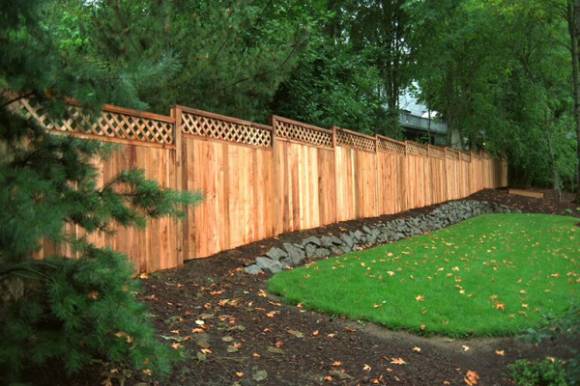
The lightweight wood has a straight grain with a rough texture that is apposite for outdoor uses. Reddish and pinkish brown with various red-brown colored streaks and bands make the surface appealing to the eyes.
Strong and stable wood with versatility is used for a variety of purposes such as fencing, boat making, posts, and many more.
This low-density wood is easy to carry, use, and transport.
Additionally, it has the property of being hygroscopic. That means the wood absorbs moisture from the environment. And it hardly gets shrunk. It damps sound, thus reducing noise pollution. Also, it discharges a strong and pleasant odor while working.
Keep it properly maintained using required preservatives and avoiding contact with the ground. By doing so, the wood can last with you for decades.
Sand it for a smooth finish on the coarse texture.
Pros
Cons
7. Spruce
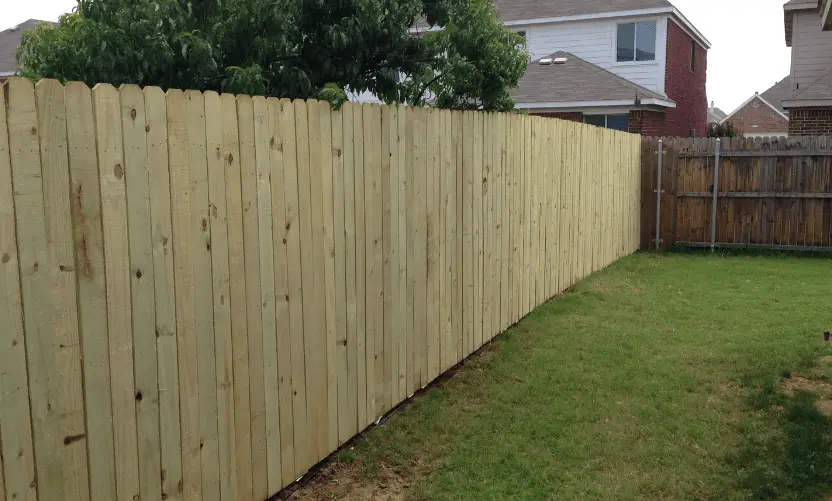
Though Spruce is a light and soft wood, it is stable enough to be used for large construction projects. The wood has straight-grained and a mid texture that is effortless to finish. In addition, it is easy to work with spruce using different tools and glues.
Shield it with paint to increase its period. It has limited uses for indoor activities and suggested to avoid using it for outdoor purposes because of its low resistance against decay and insects.
Use the wood carefully by drying it out and applying the shield of chemicals for outdoor purposes to protect it from the weather and increase its strength.
Pros
Cons
8. Oak
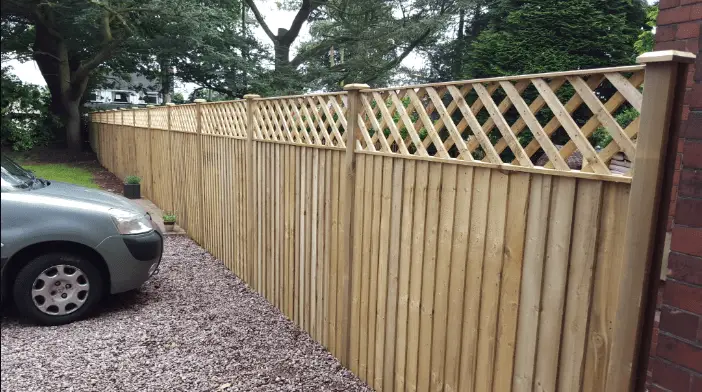
Oak is a hardwood with the features of robustness and durability. And it is widely used in the US.
It is a durable wood with an elegant natural finish. Red and white oak are the most popular species for furniture and other home-related uses out of 60 types of oak available in the US. A wide range of colors for oak wood is available because of 600+ species of oak trees across the globe.
Sturdiness and the length of oak are the best suitable for flooring and fencing. And its large size speeds up the process of installation. The best thing is not the compulsion for staining and any other treatments because the uniform and non-porous grain give an incredible finish to it.
What is the reason for its longevity?
The presence of tannin protects the wood from fungi and insects.
It has a sturdy resistance to weather and decay. And a combination of golden and silver colors gives a fine and pleasing appearance to it. However, there is a high possibility of wood darkening while exposing it to the Sun.
Pros
Cons
9. Pine
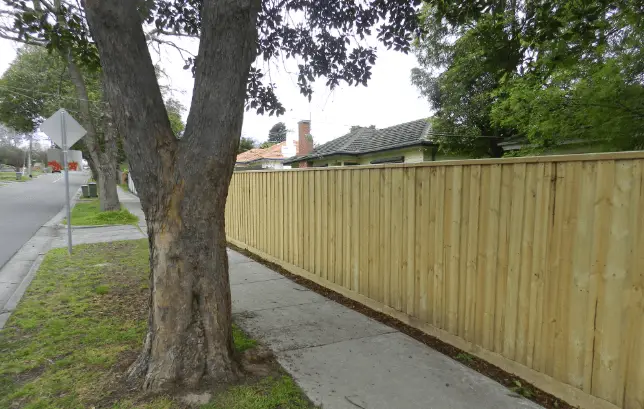
Pine is a softwood with a medium-coarse grain that fits the best in your budget. Light color with shades of white cream gives an eye-catchy look to the wood.
The density of wood lies between 500kg/m3, and its sturdiness makes the wood suitable for fencing. Pine contains natural oils that make it rot-resistant and suitable for fencing.
The medium durability of wood can create a problem. Before you use pine wood for outdoor fencing, make sure you treat it with pressure well. Pressure treatment provides resistance against moisture, rotting, and insects. Recommended treatment for pine is an autoclave.
Pros
Cons
10. Teak
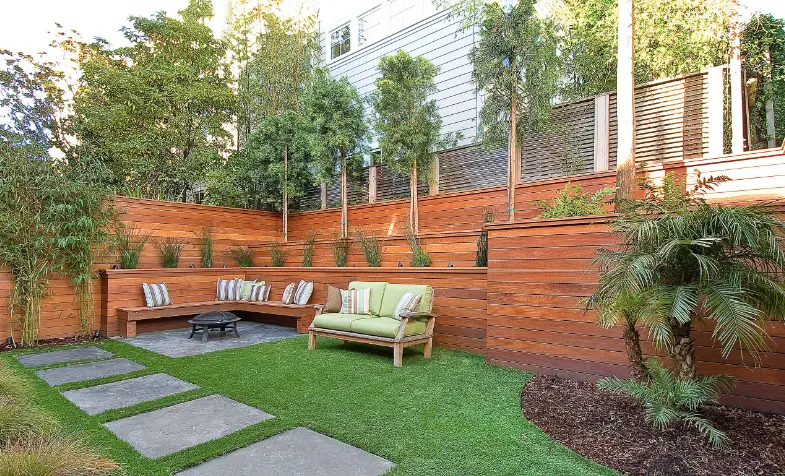
Teak is a highly durable wood appropriate for disclosure and wood fencing.
The expensive wood contains natural oils that give a greasy feel to its surface, and it acquires a natural luster after its installation.
The grain of the wood is generally straight, which is found interlocked or wavy in some cases.
The wood is sturdy and stable. So, no fear of its buckling or shrinking. It has a rough structure and repels insects and decay
How to maintain its strength?
Penetrate it with sealer or oil annually to keep up its natural color.
Apply sanding before installing it to get rid of surface weathering.
Despite the presence of high natural oils, it is easy to glue and finish the wood. It is a must to wipe the wood before finishing the wood.
Pros
Cons
Final Words
Now you may have crystal clarity about which wood to choose for wood fencing. If you look for a permanent solution for the long term, go for expensive and durable wood. Otherwise, buy affordable wood for any temporary solution.
To enhance the life span of the wood, stain it with a sealant to provide first-rate protection to wood fencing. Also, different wood has varied methods to stain because of their varying properties.
You can choose from the following fencing designs: picket, wood lattice, post and rail, and vertical board fences.

